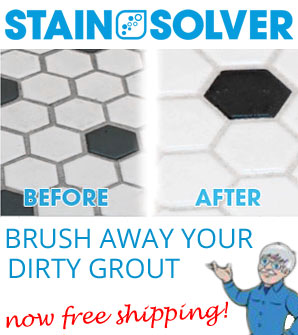Foam Insulation
DEAR TIM: Is foam insulation as good as the manufacturers claim? Is 2 1/2 inches of foam better than 5 1/2 inches of fiberglass? Is it necessary to install 2x6 walls if you only need 2.5 inches of foam insulation? What about spraying the foam directly to the roof? I've heard if you use this on the underside of the roof instead of fiberglass insulation blown on the attic floor, you don't need to do ventilation under the roof? Is this true? Does it make financial sense to use it? Dan J., Cedar Rapids, IA
DEAR DAN: I used spray foam insulation on a job of mine about 20 years ago. A customer who owned a poultry slaughterhouse insisted on it as he used spray foam insulation in his refrigeration delivery trucks and on certain walls at the actual meat processing plant.

Spray foam insulation is a superb product. As far as comparing thickness of foam to fiberglass, that is a simple comparison on a product-by-product basis. You need independent test results that confirm what the R-value is per inch of thickness of a given product. R-value is a measurement of thermal efficiency; it is a measurement the resistance to heat flow. The higher the R-value number the greater resistance the insulation has to the movement of heat.
Learn the secrets for successfully installing insulation with my Insulation Installation Checklist. I offer a 100% Money Back Guarantee.
So if you want a given R-value, then you simply specify a given finished thickness. Typically closed cell foam products produce a higher R-value per inch than batts of fiberglass.
As for wall thickness, there are other considerations such as plumbing stacks, wind loads, concentrated loads, etc. I believe that the wall stud you should use has nothing to do with the insulation. You will need to install whatever wall stud that meets the structural and mechanical needs of the home. Wall cavities do not have to be totally filled with foam insulation to perform well.
As for installing foam insulation in the attic, I would be very careful. It is possible to spray foam directly to the underside of a roof. This can keep the attic space very comfortable indeed. Consider doing this if the heating and cooling equipment must be placed in an attic space. If this equipment and the connected ductwork are exposed to extremes of hot and cold, it can lead to higher energy costs. But keep in mind that the attic is often the sole pathway for excess interior water vapor to leave a home. Some foam insulations may significantly block the movement of water vapor. In addition, be sure the foam is the open-cell variety so if there is a roof leak, the liquid water passes through the insulation and is not trapped against the wood roof sheathing and framing lumber.
Furthermore, applying foam insulation that close to the underside of asphalt shingles may create a secondary problem by causing the shingles to overheat. I would make sure that spraying foam insulation to the underside of the roof does not void any warranty on the roofing materials.
Roof ventilation is critical no matter what insulation is used. You want to be sure you can ventilate any excess water vapor in the cooler winter months. Wind-powered roof turbines can do a great job of exhausting air from attics.
Because foam insulation typically can be significantly more expensive than fiberglass or cellulose insulation, you need to determine if it makes good financial sense to invest in it. If you install it and it has the same finished R-value as fiberglass and/or cellulose, then your heating and cooling bills will be almost identical. This means that it does not makes sense to install it as you save nothing to heat and cool your home.
Remember, your furnace and air conditioner can't see what is in the walls, but they do know what the total heat gain and heat loss of the house is. Yes, the foam insulations can cut down on air infiltration. But a properly installed house wrap and a case or two of caulking can do nearly the same.
To save lots of money on heating and cooling costs you must significantly lower your overall heat gain and heat loss. This is accomplished by decreasing the size of your home or increasing significantly the R-value of the home's insulation.
But increasing R-value is not a silver bullet. As you add more insulation, the heat gain and heat loss does not respond in a linear fashion. It doesn't take long to reach a point of diminishing returns.
So before you make up your mind, talk with your HVAC contractor and ask him what the wall R-values of any insulation must be to significantly cause a reduction in the size of the furnace or air conditioning unit. That calculation takes just minutes to do.
Once you have projected heat-loss and heat-gain calculations, you can then ask the foam insulation contractor how much it will cost to hit that target. Then start doing the math. See how much you save initially on the cost of the smaller furnace and air conditioning unit. Then see how much extra the foam insulation costs versus traditional fiberglass or cellulose.
Finally, ask your local utility company to see if it can project what the cost to operate different-sized heating and cooling equipment might be over a five-year period. Do the addition, subtraction and multiplication and see where you end up.

|
Still Need Help? Type Your Keywords Here:
Your Facebook friends would love to know how this column helped you solve your problem. Type a quick comment of what you discovered here at AsktheBuilder.com. Thanks! |
Comments:Welcome! I, Tim
Carter, don't answer questions
here. If you post a question here in the Comments Area,
perhaps another visitor will help you. You need to go to the Ask
Tim page if you want a question answered. Once there, look
closely at how many weeks behind we are. Please be patient as you use
this free service. If you have an emergency and need to talk to me,
there is an option there for you.
Adem 15 Feb 2008, 09:51
Is icynene still regarded as the foam insulation of choice? From what I
understand, it's of the open cell variety which allows for the escape of
water vapor. I'm about to have this applied to my addition; and pour
formula to retrofit the 100 year old walls. The addition was framed using
2x6 lumber which I assume should allow for more material in the stud
bays... Also, is advisable to apply the icynene to the attic floor? Thanks
in advance for all insight.
AsktheBuilder 15 Feb 2008, 17:37
Adem,
I can't endorse any product for obvious reasons. But I can tell you that I am giving it *serious* consideration for my new home up in New Hampshire.
Adem 16 Feb 2008, 07:42
OK... but would you install open cell spray foam in the floor of an
unfinished attic. The attic has a furnace living up there... Thanks!
AsktheBuilder 16 Feb 2008, 10:29
Adem,
Possibly yes...... depends on the con of loosing access to buried cables....... and what about roof leaks? How long does it take for that foam to dry?
Dean 17 Feb 2008, 15:23
I build in upstate New York and have used both the open cell and closed
cell foam insulations. The closed cell, in my opinion, is a much better
product, with higher r-values per inch and inherent vapor barrier
properties it possesses. Technically, a vapor barrier is required over
Icynene foam, due to its ability to transmit moisture (open cell).
In comparison to Fiberglass insulation the closed cell foam outperforms by a factor of 2:1 in real heat loss. Here's why: Fiberglass insulation will absorb moisture in the wall cavity due to normal water vapor transmission unless the vapor barriers are caulked and sealed and NO penetrations exist. Typically, an R-19 or R-21 wall is reduced to an effective R-value of 10 or 11 once moisture has penetrated the wall cavity. Add the air infiltration resistance of foam insulation (air infiltration accounts for 35 to 40% of your heat loss) and the spray foams are a hands down winner over fiberglass products. For cost reasons, I am insulating exterior walls, basement walls and all rim joist cavities with closed cell foams and insulating horizontal attic cavities with a 6 mil poly vapor barrier and R-49 blown in fiberglass. Cathedral or vaulted rafter framed areas get spray foamed as well. The only additional consideration is an HRV, an air exchanger that maintains fresh air quality within the home.
Adem 17 Feb 2008, 17:39
Dean,
By spraying the rafters, aren't you concerned about the attic and shingles getting extremely hot during the summer months? Couldn't this possibly shorten the life of the shingles? How will the attic air be vented?
Dean 18 Feb 2008, 12:23 Adem- In the cathedral/sprayed rafter areas, there are two methods that can be used. One, is to spray foam directly to the back of the roof sheathing, with out the ventilation from the soffit to the ridge vent. This sprayed in place foam application is no different than using pre-insulated stress skin foam panels that are commonly used in timber frame construction (3 or 4" foam with an outer skin of osb and an inner skin of either osb or drywall). I have done this on projects and after 10 years, the shingles are fine. You can verify the suitability with the shingle manufacturer. The other method is to install the normal proper vents in the bays and spray foam over them. I personally prefer the "hot roof" application of spraying the foam directly to the back of the plywood roof decking. The primary reason for the proper vents is to vent moisture laden air from the rafter bays (as would occur with fiberglass). Since the closed cell foam insulation totally precludes the moisture situation, the ventilation is not really a necessity.
Dean 18 Feb 2008, 12:51
Adem--
by the way, the attic space does not get hot.
Dan 19 Feb 2008, 09:44
I used insoylate (open cell) spray foam in my 3 year old tinmber frame
home. In the past 3 years I have had water vapor leaks running down the
side of my wall(it is not in the same spot); usually in a corner.
I am almost sure that the fault of this is poor appliation leaving several voids in the product, no vapor barrier (which was not reccomended by the contractor), and no proper venting. I think the moisture seeps through the tongue & grove pine celings, freezes in the voids next to the blandex roof, and when it gets warm out, the moisture runs down the wall. What do you think? I am very concerned about mold, rot, and the integrity of the home. Please help! Dan
Dean 20 Feb 2008, 14:12
Dan-
It's definitely a vapor barrier issue. The dew point (the point at which moisture condenses into water) is 1/3 of the way into the R-value of any wall or ceiling assembly. With open cell foams, they can wick moisture into the insulation. As it (the moisture vapor) migrates through the insulation and hits the dew point area it condenses into water. This can be ugly, as it is a constantly occurring cycle, year after year. Unfortunately, there isn't an easy fix your your situation now that all interior finishes are applied. I would call the insulation contractor back and press him on the issue. Hopefully you have a certificate of insurance from him that has completed operations coverage. Voids in the insulation would contribute to the problem, but the lack of an impervious vapor barrier (either sprayed on [a product like Supergreen Lam]or a 6 mil poly vapor barrier with joints taped with tyvek tape or equal)is definitely the main issue. View all comments |








